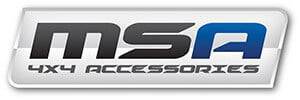Bull Bars
Choosing the Right Bull Bar
Choosing the right bull bar that fits the purpose and design of your 4WD is no longer a straightforward decision. In years gone by, the whole process was much simpler – look at the four or five bull bars that actually fit your 4WD and choose the one that looked and fit the best. But with so many options available on the market today, it can be challenging to narrow down which bull bar will work best with your vehicle.
There seems to be a multitude of factors which must be considered today to ensure your bull bar is compatible with your 4WD. The weight of the bulbar, the type of accessories you wish to mount, and ensuring that the bulbar is manufactured and engineered to Australian standards are just some of the aspects which must be considered. Then you need to make sure that the bull bar is compatible with your 4WD’s safety features such as airbags, cruise control, blinkers, and parking sensors. Where do you begin?
If you’re one of many people who need some help choosing the right bull bar for your vehicle, today we’ll be offering a simple step-by-step guide.
Materials
The first decision you’ll need to make is the type of material your bull bar is made from. In the old days, you either chose steel if you needed a heavy-duty bull bar or alloy if you wanted something a little fancier. Despite this, with the introduction of high-strength alloy and LLDPE (linear low-density polyethylene) bull bars, the decision isn’t so simple anymore.
The primary factors you should consider is the density and tensile strength of the bull bar. Steel bull bars clearly have the highest tensile strength at roughly 2750kg/cm2, followed by alloyat 2300kg/cm2then LLDPE at 305kg/cm2. However, density is also a vital factor to consider and it’s important to keep in mind that steel essentially weighs three times as much as alloy and nearly 10 times more than LLDPE. This has several consequences in terms of front-end suspension and the fuel economy of your vehicle. Today’s high-strength alloy bull bars offer a similar level of protection with dramatically reduced weight along with a reduction in fuel consumption of almost 10%.
As a result, alloy bull bars are more expensive than steel, however they don’t have the high-level of endurance that steel bull bars offer. In any case, the material of the bull bar isn’t as important to buyers as the design. Material thickness, quality, and internal bracing can mitigate the potential advantages of any material over another.
Design
The aesthetic appearance of bull bars plays an important role with buyers and most popular bull bars are based off a lower bumper replacement in plate-steel, plate-aluminium, or roto-moulded plastic. These designs typically allows mounting options for 4WD accessories like winches, bash plates, aerials, and driving lights. Providing adequate protection for low-height impacts and very popular in the Australian market, these bull bars generally have minimal interference with the overall design of the 4WD.
Additional protection can be added through posts or hoops. Single hoops offer extra protection for the engine’s radiator in the event of an animal strike, while triple hoops protect the entire front end of the vehicle including headlights. Offering the greatest level of protection is the five-posts bull bars which are popular in rural areas.
On the other hand, there are also simple designs available in the form of tube bars which offers lower weight and provides little protection from animal strikes. Despite this, tube bull bars offer unparalleled ground clearance and approach angles that are typically required for rock crawling.
Additional requirements
With bull bars being the cornerstone of 4WD accessories, it’s vital that you choose the right one the first time. Here are some additional requirements you should consider when purchasing a bull bar for your 4WD.
- Is the bull bar airbag-compatible? If your 4×4 has an air-bag, then it must be ABC.
- Is the bull bar ADR-compliant? If it’s not ADR-compliant, it’s not legal to use on Australian roads.
- Does the bull bar fit your 4×4? Manufactures are known to change minor details throughout the life of a vehicle, so make sure the bull bar fits your 4WD.
- Can you fit all your accessories on the bull bar? At a minimum, the bull bar should fit a winch and driving lights.
- Will your accessories work with the bull bar? For example, high lift jacks need a high-lift jacking point
- Does the bull bar have an engineered recovery point? You can’t anchor a snatch strap without one.
- Will your ground clearance be affected? You look at the purpose of the bull bar – a reduction in off-road capability can be justified against increased passenger protection and strength in rural areas.
- Will you need to purchase additional suspension?
- Will the bull bar work with all your modern 4×4 gadgets such as parking sensors, blinkers, headlight washers, and cruise control?
- Des the bull bar require additional maintenance? Alloy bull bars need to be polished regularly
- Can you repair the bull bar if needed? Will a minor accident translate to a brand new bull bar?
As you can see, there are many variables to consider when choosing a bull bar for your 4WD. In most cases, it’s best to seek advice from the professionals to ensure you’re making the right decision. If you require any additional information or just need some friendly advice, speak with the expertsTJM Dandenong by phoning 03 9792 1116.












